 1-800-805-5783
1-800-805-5783 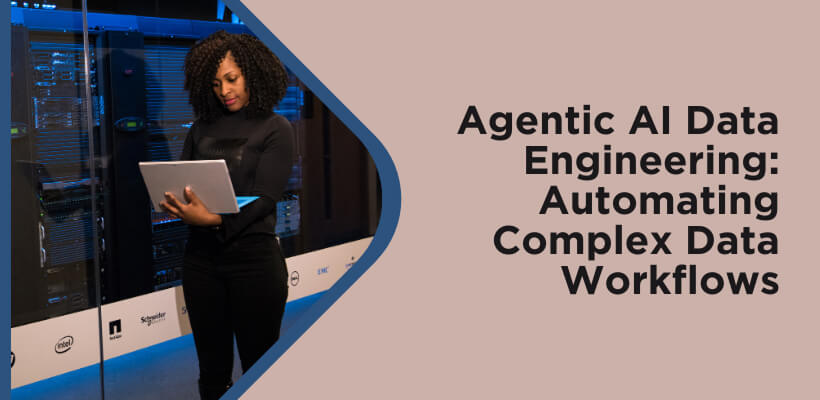
Agentic AI data engineering uses autonomous AI systems to manage and optimize data workflows without constant human oversight. These systems understand goals and act independently.
You don’t need to babysit pipelines or fix ETL jobs every time something breaks. The system works toward outcomes on its own.
Data volume, velocity, and variety are growing faster than most teams can manage. You’re dealing with real-time data feeds, shifting source formats, API updates, and pressure to deliver insights instantly. But most data workflows still rely on manual patches and rigid scheduling. That gap between speed and stability is killing productivity.

Agentic AI data engineering matters because it addresses the underlying issues. These systems work continuously, adapt automatically, and reduce your ops burden. In 2025, staying competitive means making your pipelines smarter, faster, and able to recover without human intervention. Agentic AI data engineering doesn’t just keep up—it moves ahead.
You need systems that act, not just notify.
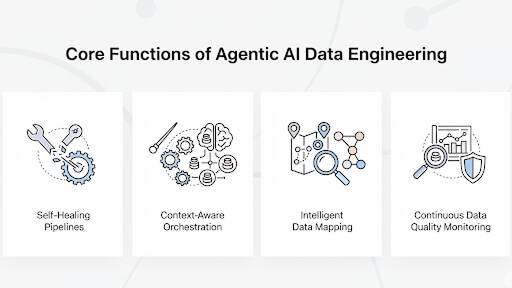
The AI monitors pipelines continuously. When source schemas change or jobs fail, the system updates the logic and resumes processing automatically.
For example, a CSV gains a new column. Instead of crashing, the agent modifies the transformation logic and keeps things running.
Instead of fixed schedules, agentic systems adapt execution based on context.
If a data source is late, pipelines pause or reroute.
If demand spikes, the system scales resources automatically.
You get resilient workflows that don’t rely on perfect timing.
The AI infers schema relationships by studying metadata and content. It suggests or applies mappings without human coding.
That removes hours of manual alignment work and cuts mapping errors to almost zero.
The system defines and enforces quality rules on its own. It catches anomalies, fixes issues, or alerts only when action is needed.
Over time, it learns to reduce false positives and improve precision.
A Fortune 500 retailer once managed 1,200+ pipelines. After adding agentic AI on Snowflake:
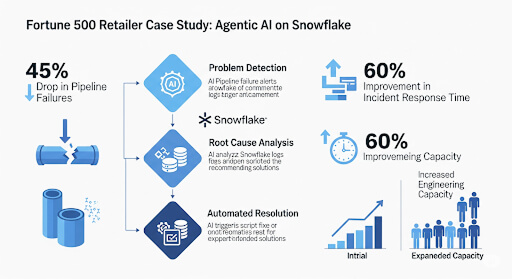
The AI now detects issues, initiates fixes, and launches jobs when upstream data arrives early.
Airbyte adopters test AI that rewrites connector logic when APIs change. No manual updates. No broken pipelines.
This approach eliminates connector downtime and lets integrations adapt automatically.
Databricks embeds AI agents to monitor metadata drift. When lineage breaks or formats shift, AI either repairs the issue or flags the problem.
This boosts audit readiness and trust in your data maps.
Faster Response Times: Your system fixes errors immediately, without waiting for alerts or engineer intervention.
Lower Operational Overhead: You swap firefighting for engineering. Teams focus on delivering improvements instead of fixing issues.
Higher Data Quality: Issues surface in real time, not downstream in reports. That reduces bad analytics and wrong decisions.
Scalable Automation: The system learns from usage. As you onboard more sources, the AI adapts without manual tuning.
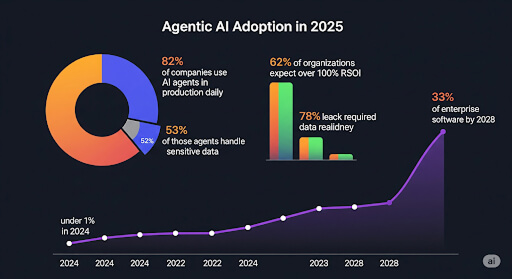
These numbers show the gap between hype and capabilities. Agentic AI data engineering is particularly effective for individuals who prioritize establishing solid data foundations.
You don’t need to overhaul your stack.
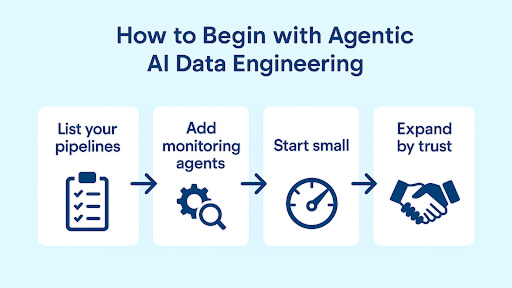
Add agentic AI data engineering one layer at a time. Let it prove itself before wider roll‑out.
“We don’t need more alerts. We need systems that take action.”
Anjali Rao, VP Data Engineering, StreamLab Analytics
“Agentic AI gives time back to engineers. It handles ops so humans can innovate.”
Kevin Dorsey, CTO, QuantEdge Systems
Agentic AI data engineering isn’t just a trend, it’s the real solution to brittle pipelines, constant schema changes, and overloaded teams. It detects and fixes errors automatically, adjusts to new data sources without breaking, and keeps your data clean without manual intervention.
Instead of spending time on routine fixes, your team can focus on building real data products. If you’re ready to stop firefighting and start scaling, agentic AI data engineering is the way forward. Start small, build trust in the system, and expand from there.
1. How is agentic AI different from traditional automation?
Traditional automation follows fixed rules. Agentic AI understands goals and makes decisions in real time.
2. Is agentic AI secure?
Yes, if implemented with proper controls. Agents follow strict role-based access and log all actions.
3. Will this replace data engineers?
No. It enhances their work by removing repetitive, low-value tasks.
4. Can I use it with legacy systems?
Yes. Wrappers and APIs allow agentic AI to work with older systems.
5. What skills does my team need?
Familiarity with AI concepts, workflow orchestration tools, and observability platforms helps.
At [x]cube LABS, we craft intelligent AI agents that seamlessly integrate with your systems, enhancing efficiency and innovation:
Integrate our Agentic AI solutions to automate tasks, derive actionable insights, and deliver superior customer experiences effortlessly within your existing workflows.
For more information and to schedule a FREE demo, check out all our ready-to-deploy agents here.